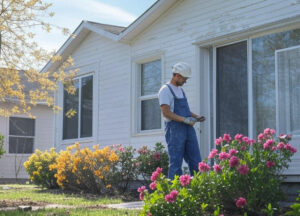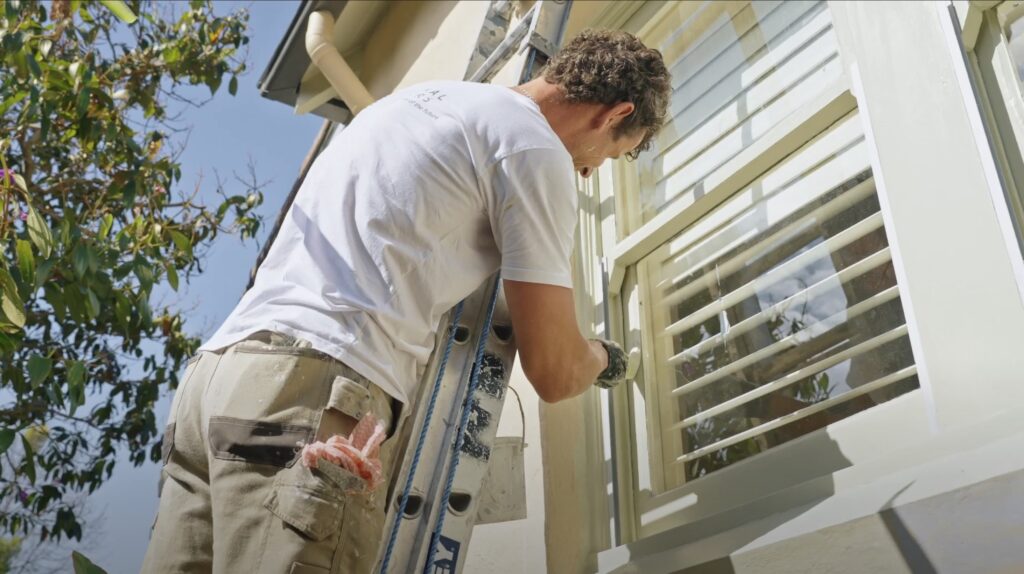Weather Matters: Best Seasons to Paint Your Home’s Exterior

Best season to paint a house
Choosing the right time to paint your home’s exterior can make the difference between a flawless, long-lasting finish and a disappointing result that peels or bubbles within months. While you might be eager to transform your home’s appearance, understanding how weather conditions affect exterior painting is crucial for achieving professional results that stand the test of time.
Why Weather Conditions Are Critical
Exterior paint needs specific environmental conditions to cure properly. Temperature, humidity, and precipitation all play vital roles in how paint adheres to surfaces and dries. When conditions aren’t ideal, even the highest-quality paint can fail prematurely, leading to costly repairs and repainting jobs down the track.
Professional painters know that rushing a project during unfavorable weather is never worth the risk. The extra time invested in waiting for optimal conditions pays dividends in durability and appearance.
Spring: The Prime Painting Season
Spring emerges as the gold standard for exterior painting projects in most regions. Temperatures typically hover in the ideal range of 10°C to 30°C, providing perfect conditions for paint application and curing. The moderate humidity levels help paint dry evenly without rushing the process or causing moisture-related issues.
During spring, you’ll benefit from longer daylight hours, allowing painters to maximize productivity while maintaining quality standards. The mild weather also means surfaces are less likely to be damp from morning dew, and there’s generally less chance of sudden temperature drops that can affect paint curing.
However, spring does bring occasional rain showers. It’s essential to monitor weather forecasts closely and plan painting schedules around dry spells. A professional painting company will always check extended forecasts before starting your project.
Summer: Handle With Care
Summer can be suitable for exterior painting, but it requires careful consideration and timing. Early morning or late afternoon sessions often work best, as midday temperatures can soar above 35°C in many areas. Extreme heat causes paint to dry too quickly, preventing proper adhesion and potentially leading to cracking or blistering.
Direct sunlight on freshly painted surfaces can be problematic, as it causes uneven drying and may result in visible brush or roller marks. Experienced painters often work on the shaded side of your home or schedule work to follow the sun’s path around your property.
Summer’s lower humidity can be advantageous in coastal areas where moisture is typically higher. Just ensure your painting team starts early and takes necessary precautions during peak heat hours.
Autumn: A Reliable Alternative
Autumn rivals spring as an excellent time for exterior painting projects. Temperatures begin to moderate after summer’s heat, creating comfortable working conditions and ideal paint curing environments. The reduced humidity levels help paint dry consistently without moisture-related complications.
This season offers a sweet spot before winter weather arrives, and many homeowners find autumn scheduling works well for their timelines. Trees losing their leaves also mean less debris landing on wet paint surfaces—a small but appreciated benefit.
Be mindful that autumn days grow shorter, potentially extending project timelines. Additionally, morning dew can linger longer as temperatures drop, requiring later start times to ensure surfaces are completely dry before painting begins.
Winter: Generally Not Recommended
Winter presents the most challenging conditions for exterior painting. Most paints require minimum temperatures of 10°C for proper application and curing, and many regions regularly fall below this threshold during winter months.
Cold temperatures slow the curing process significantly, and if paint freezes before fully curing, it can result in poor adhesion, cracking, and premature failure. Morning frost and shorter daylight hours further complicate scheduling and application.
However, in mild winter climates where temperatures consistently stay above 10°C, winter painting may be possible during midday hours. Always consult with professional painters who understand your local climate conditions before attempting winter projects.
Key Weather Factors to Monitor
Beyond seasonal considerations, specific weather conditions should guide your painting schedule. Temperature consistency matters—look for forecasts showing several consecutive days with temperatures between 10°C and 30°C. Avoid painting when temperatures are expected to drop below 10°C within 24 hours of application.
Humidity levels ideally should fall between 40% and 70%. Too low, and paint dries too quickly; too high, and moisture can prevent proper curing. Always ensure at least 24-48 hours of dry weather following paint application for optimal results.
Wind conditions also play a role. Moderate winds can help with drying, but strong gusts create dust and debris problems while making application more difficult. Check wind forecasts and postpone if sustained winds exceed 20 km/h.
Surface Preparation and Weather
Weather doesn’t just affect paint application—it impacts surface preparation too. Surfaces must be completely dry before painting begins. After rain, allow at least 24-48 hours for exterior surfaces to dry thoroughly, depending on humidity and sun exposure.
Pressure washing, a common preparatory step, requires adequate drying time. Schedule pressure washing at least three to five days before painting begins, accounting for weather conditions during the drying period.
Working With Professional Painters
Professional painting companies understand these nuances and build weather considerations into project planning. They’ll monitor forecasts, schedule work during optimal conditions, and have contingency plans for unexpected weather changes.
Quality painting contractors won’t rush your project to meet a deadline if weather conditions aren’t suitable. This professionalism protects your investment and ensures results you’ll be proud of for years to come.
Personal Painters Team at work
Planning Your Exterior Painting Project
Start planning your exterior painting project several months in advance, particularly if targeting spring or autumn seasons when demand for painting services peaks. This advance notice allows your painting company to schedule your project during the most favorable weather windows.
Flexibility in your schedule helps accommodate weather delays. While frustrating, these postponements protect your investment and ensure professional results. Most painting companies will communicate weather-related scheduling adjustments promptly and work to minimize disruptions.
The Bottom Line
Exterior painting is a significant investment in your home’s appearance and protection. Choosing the right season—typically spring or autumn—maximizes your chances of achieving a beautiful, durable finish that enhances your home’s curb appeal and value.
While weather adds complexity to project planning, working with experienced painters who prioritize optimal conditions over rushed timelines ensures you’ll enjoy your home’s fresh new look for many years. Don’t let eagerness override wisdom—patience with weather timing pays off in the long run.
Ready to transform your home’s exterior? Contact our team to discuss your project and schedule during the ideal season for your area. We’ll help you plan the perfect timeline for outstanding results.
